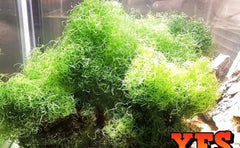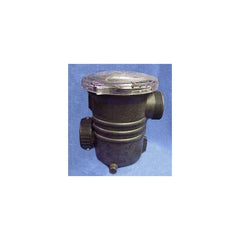X15 Assorted Gourami Fish Live Tropical Community Mix
Ebay
$ 131.53

X15 ASSORTED GOURAMI FISH LIVE TROPICAL COMMUNITY MIX - FREE SHIPPING
They will be scooped out our holding tanks. We cannot guarantee we will be able to scoop ALL different types, but we will try to get a good variety.
Minimum Tank Size: 20 Gallons (75 Litres)
Care Level: Easy
Water Conditions: 6.0-7.5 pH and Soft to Moderately Hard
Temperature: 72-82 °F (22-27 °C)
Maximum Size: 3.5 inches (9 cm)
Gourami care and breeding varies slightly from species to species, but most Gourami have the same basic needs. If you are seriously considering spawning your Gourami, read the general info then check the profile for the species you are spawning to see if they have special needs (profile links are in the last section of this article).
Aquarium Setup and Tankmates
Gouramis are relatively undemanding, and therefore are well suited to most community aquariums.
Choose non-aggressive similar sized tankmates. Dwarf Cichlids are suitable, as are charcins and other labyrinth fish. Because males may be rather territorial, it is wise to not keep more than one male Gourami in the same tank unless it is large enough to allow each to claim his own territory.
A fine to medium size neutral colored substrate is preferable. Optimum water temperature for most species is 74 - 79 F (24 - 26 C). The water should be neutral to slightly acidic and relatively soft. Plant the tank well with Cryptocoryne, or sturdy vegetation such as Java Fern and Vallisneria.
Diet
Gouramis will eat almost any food; however, it's important to vary the diet to ensure balanced nutrition. A combination of dry as well frozen and fresh/live foods will provide a well-rounded diet. When conditioning prior to breeding fresh vegetables such as lettuce, cooked peas, and spinach, may also be offered as well as live foods such as black worms, brine shrimp, and glass worms.
Breeding
Gouramis like a well planted tank with slightly acidic water and are happiest when they have plenty of hiding places, though they'll also need free swimming space to dart about.
Though they're generally peaceful, the males can be quite territorial when they're ready to breed, so it's best not to keep more than one male unless you've got enough room for each to establish his own territory; however, gouramis are shoaling fish and large numbers of females can be kept together without problems. They are friendly by nature and will get along well with any non-aggressive tankmates.
Gouramis are very easy to feed and will eat almost anything they're given, though for best results you should ensure that they have a varied diet. Flakes, freeze dried foods and live foods are all suitable provided that they are an appropriate size for these fish's small mouths.
Gouramis have labyrinth organs which enable them to breathe air efficiently from the surface; you should therefore not be worried if you see them gasping at the top of the tank. It's important to ensure that they always have access to the surface.
Types of Gouramis
There are several different species of gouramis available for the aquarium. The good news is that they will happily shoal together in mixed groups, though it's advisable to have one male and at least one female of each sort. Some of the most popular are as follows:
Blue Gouramis - Also known as three spot gouramis, these pretty fish vary in colour with their moods and darken during spawning. They are among the largest of gourami species.
Pearl Gouramis -Among the hardiest gourami species, these attractive speckled fish are highly adaptable but prefer an aquarium with subdued lighting and a dark substrate.
Banded Gouramis -Also known as rainbow gouramis, these sturdy fish need plenty of vegetable matter in their diets.
Kissing Gouramis -The males of this variety lock their mouths together when challenging each other. They have small, sharp teeth which make them efficient algae eaters. Pink and green variants are available.
Moonlight Gouramis -Distinctly different in shape from their kin, these shy fish are notable for the male's habit of rolling the female onto her back during spawning.
Dwarf Gouramis -These tiny fish need a quiet environment but are highly sociable. They are available in several colour varieties.
BREEDING
Gouramis are relatively simple to breed and are recommended for beginners trying to acquire these skills. Males and females are fairly easily distinguished, with the former having a more slender body shape and more angular fins.
Just one male and one female should be selected for breeding at one time, and they should be placed in a special breeding tank with low water (six to eight inches will do) and plenty of vegetation.
Fairly large grained, loose gravel or pebbles will be useful to the male as he builds a bubble nest. When he's ready, he'll try to lure the female into this and persuade her to lay eggs. Bear in mind that males can be quite aggressive at this stage, so it's important that the tank contain plenty of hiding places where the female can escape from his advances.
After spawning, the female gourami should be removed from the tank. The male will make a good parent, tending the eggs and fry and sometimes spitting water into the air as he endeavours to keep everyone safely in the nest.
Once the fry hatch they can be fed with infusoria and tiny brine shrimp.
Although they are comparatively simple to keep, gouramis should not be dismissed as a beginner's fish. With lots of varied and interesting behaviours, they're fascinating to watch for any aquarist. Attractive and personable, they make a great choice.
QUESTIONS & ANSWERS
Have a Question?
Be the first to ask a question about this.















